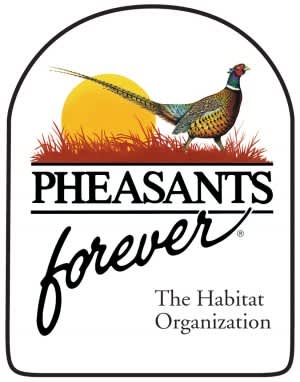Pennsylvania Wild Pheasant Recovery Areas Eligible for CREP Improvements
Pheasants Forever 06.05.12

The U.S. Department of Agriculture (USDA) and the Commonwealth of Pennsylvania recently finalized changes to the provisions of the Conservation Reserve Enhancement Program (CREP) that will increase the acreage ceiling by nearly 20,000 acres and make all Pennsylvania CREP practices eligible for sign-up in Chesapeake Bay watershed counties. With all four of Pennsylvania’s current Wild Pheasant Recovery Areas falling within the designated counties, the additional 20,000 acres will provide an opportunity to improve habitat for pheasants and other ground nesting wildlife.
“Historically, CREPs have been a proven success for increasing wildlife and enhancing our environment, and the Pennsylvania CREP is no exception,” says Shon Robbins, Pheasants Forever and Quail Forever Regional Wildlife Biologist, “The acres provided in the revisions will deliver the ability to expand on much needed habitat as the commonwealth’s Wild Pheasant Recovery Areas continue to help pheasants regain a stronghold in Pennsylvania.”
The Pennsylvania CREP, first announced in April 2000 with a 100,000-acre goal, originally included 20 counties in the lower Susquehanna and Potomac River basins. The project was expanded in 2003 to add another 100,000 acres and increase the project area to include 23 northern tier counties. Now the Pennsylvania CREP will be expanded again to add 19,746 acres and is available to all 43 Pennsylvania counties in the Chesapeake Bay Watershed. The Ohio River Basin CREP (2004) in western Pennsylvania now targets 40,000 acres that agricultural producers may use to voluntarily establish conservation practices on their land.
Robbins went on to note, “One of the most beneficial CREP practices for the commonwealth’s wild pheasant population is the planting of native warm season grasses and wildflowers over entire fields or along field borders. Another popular practice is the establishment of streamside (riparian) buffers. By utilizing projects such as buffers, which in addition to acting as a filter for runoff offer ideal habitat for ground-nesting animals, we will be able to simultaneously provide for wildlife and increase the environmental quality from Pennsylvania all the way to the Southern United States.”
The Conservation Reserve Enhancement Program (CREP) is a voluntary land retirement program that helps agricultural producers protect environmentally sensitive land, decrease erosion, restore wildlife habitat, and safeguard ground and surface water. Based on the highly successful Conservation Reserve Program (CRP), CREP is able to offer landowners a competitive way to implement needed conservation measures.
For more information on the Pennsylvania CREP revisions or Pheasants Forever in Pennsylvania, please contact Shon Robbins at (570) 204-5761 / Email Shon. For all other inquiries, please contact Rehan Nana, Pheasants Forever Public Relations Specialist, at (651) 209-4973 / Email Rehan.

